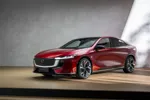The availability of public charging provision for electric vehicles (EVs) and plug-in hybrids will be one of the crucial factors in encouraging uptake among fleets. There are several private companies offering commercial and residential charging posts, working within the Government’s Plugged-in Places scheme to provide such an infrastructure.
Estimates of how many publicly-available charging posts are currently in the UK vary. Simon Daukes, CEO of Chargemaster, says there are possibly 1,000 posts from all suppliers. Others suggest 1,600.
Justin Meyer, business development manager at APT Technologies, is less optimistic. “We think there is a lot of exaggeration in the market,” he says.
“I would estimate between 600 and 800 charging posts are currently available.”
To offer comparison, there are perhaps 2,000 vehicles – a mix of private cars and around 700 commercial vehicles – which would use such facilities.
However, all these companies are planning substantial numbers of installations in the next 18 months. Meyer is aiming for 1,500 to 2,000; Chargemaster is rolling out 4,000; Siemens is targeting the fleet sector as the emerging EV adopters.
The first generation posts were built to correspond with standard 13 amp domestic wiring, but the most recent industry standard is Mode 3, type 2 posts which can provide either 16 or 32 amps.
Mode 3 offers a greater ability to transmit current, giving faster charging. It runs a brief diagnostic on the car wiring for safety and it can match the supply of electricity to what the vehicle wants to pull down.
Over time all of the original 13 amp posts will need to be upgraded, although most suppliers say this is not a problem.
The market is moving toward faster charging – hence the upgrade to 16 or 32 amps. These are all AC facilities and Mode 3 seeks to find the sweet spot between what the installation can offer and what the car requires, thereby accommodating legacy vehicles.
The plugs for EVs have found a de facto standard in the German-devised 612196-2 ‘Mennekes’ plug. Only France and Spain have devised their own plug standards. Although not an enshrined standard, plugs are unlikely to cause compatibility issues for motorists.
Plugged-in Places
The Government’s Plugged-in Places scheme initially envisioned a network of charging places on streets as well as public centres, such as shopping malls and public car parks. The scheme is gathering pace, although the goals have been revised with the realisation that most people will charge at home, off-road, or at work.
On-street parking is scarce in urban areas – two-thirds of Londoners do not have off-street parking – posts and cables could cause potential health and safety risks, and installation in the public space is expensive.
Calvey Taylor-Haw, MD of Elektromotive, which claims to have set up 800 charging points, says: “It’s expensive to dig a hole in the street. It would cost us about £5,000 to complete an on-street installation.”
The major costs are planning permissions and establishing a connection from the grid to the roadside.
More on page two...
















Login to comment
Comments
No comments have been made yet.